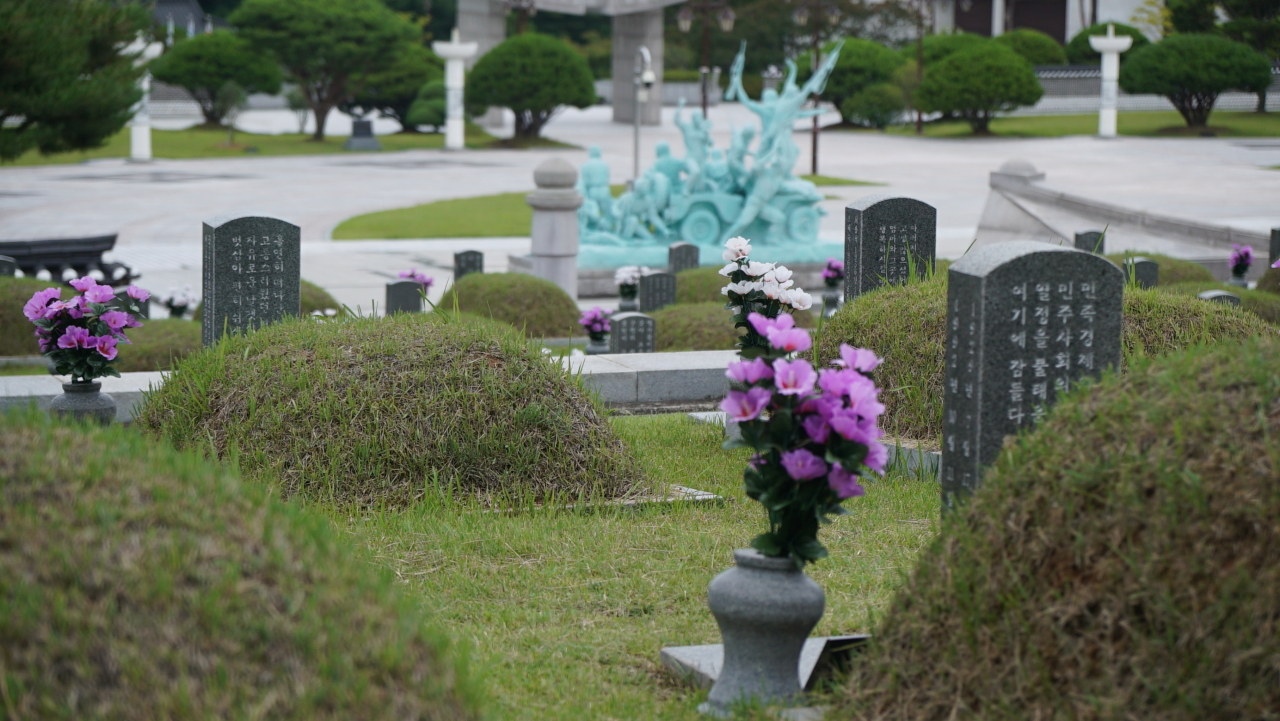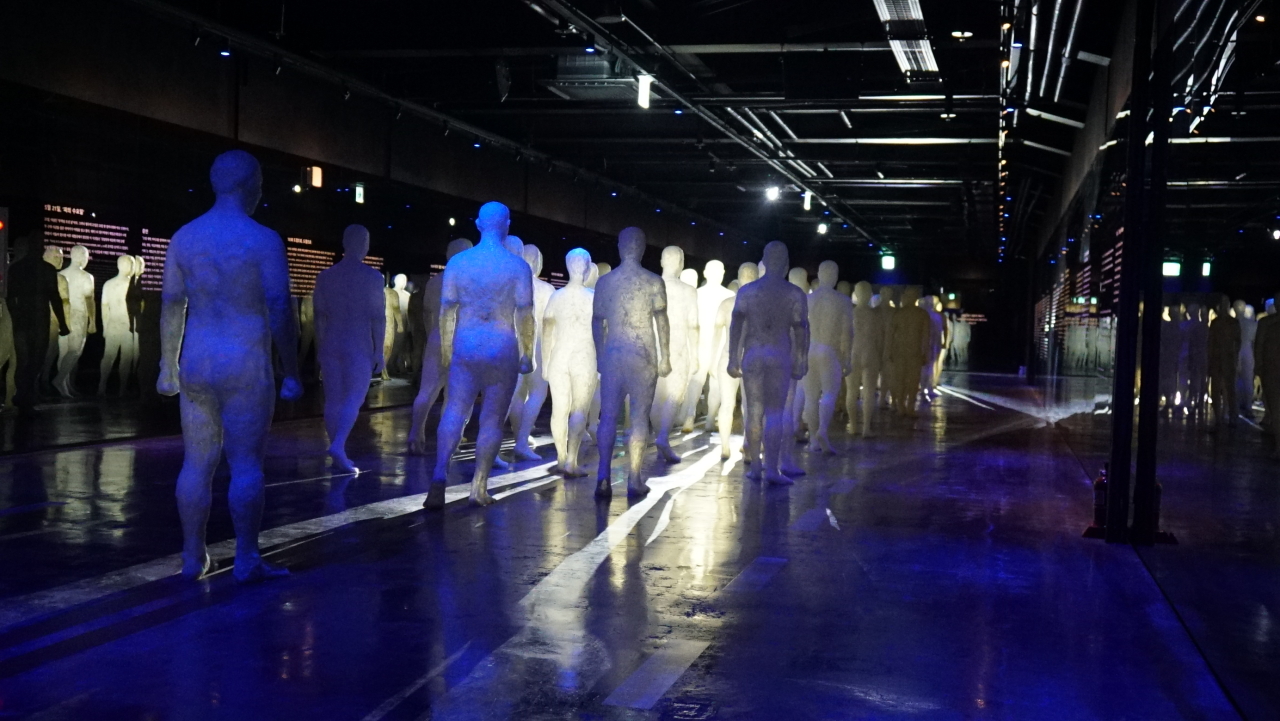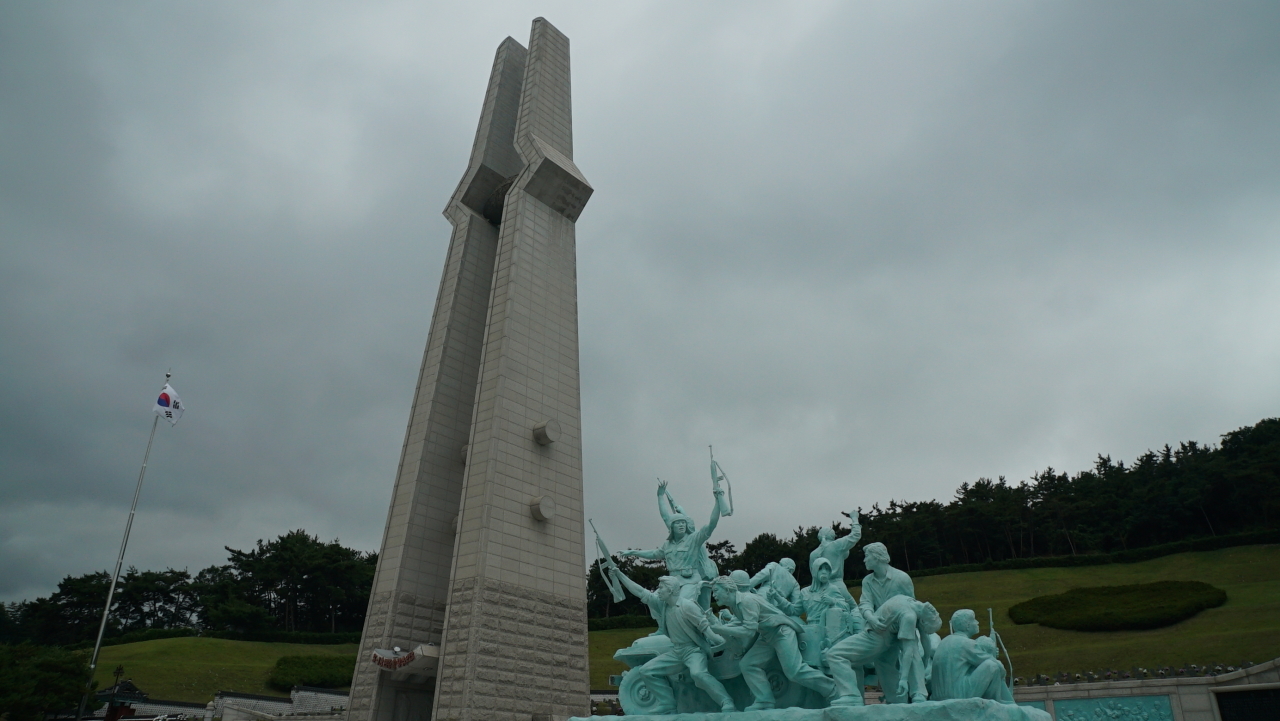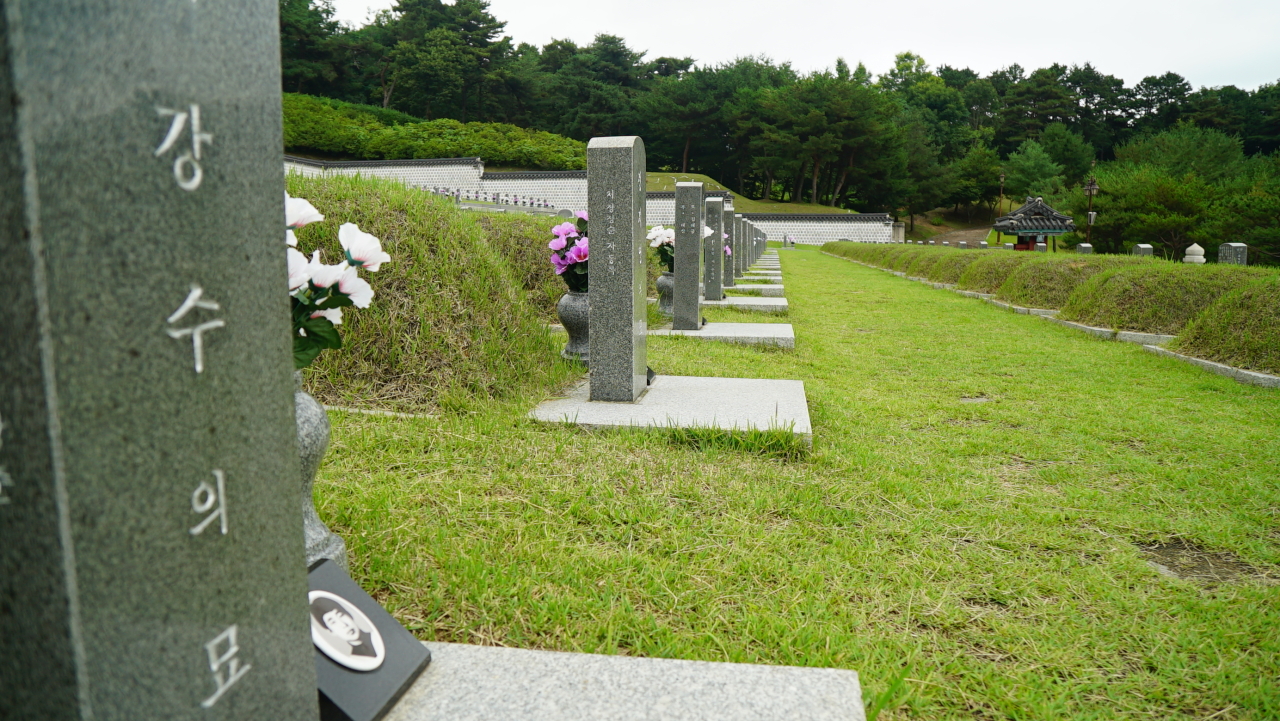Tracing the footsteps of democratization in Gwangju
By Yoon Min-sikPublished : July 19, 2019 - 09:21
GWANGJU, South Jeolla Province -- Geumnam-ro in Gwangju’s Dong-gu district is a street just like any other, bustling with cars and people going on with their lives and whatnot. Walk past Geumnam-ro Park, past the YMCA building, and you will find the Asia Culture Center. Right beside it stands an old battered building once used as the office of the provincial government.
You have just traced the footsteps of the citizens who rallied against the paratroopers, armed with tanks and machine guns, trying to squash the voices of protest against the military regime, in the tragic and bloodied May 18 Gwangju Democratic Uprising of 1980.
You have just traced the footsteps of the citizens who rallied against the paratroopers, armed with tanks and machine guns, trying to squash the voices of protest against the military regime, in the tragic and bloodied May 18 Gwangju Democratic Uprising of 1980.

There are a number of sites around Gwangju dedicated to preserving the memory of the uprising, some of which have become tourist attractions.
Relics of the past
The old provincial office is where the citizens, refusing to give in despite being completely sealed off from the rest of the country, stood their ground until the last moment.
The words “Last Standing Ground of May 18” is etched across it, and the iconic fountain stands in front of it. It was here that the people rallied, and it was also here that the bloodshed that escalated the situation occurred.

On May 20, thousands gathered at the provincial office as taxi, bus and truck drivers honked their horns to show their support. The mob demanded that the Army stand down, and it initially said it would.
But one fateful afternoon on May 21, the national anthem started playing during a confrontation between soldiers and rallying citizens in front of the fountain. Just as the song ended, the Army fired on the protesters -- the bloodiest moment in the 10-day uprising.
The building is preserved as a memorial for everyone who fought in Gwangju that month. Although the ongoing exhibition only fills parts of halls, walking up the stairs and looking out the window to see Geumnam-ro can be a harrowing experience.
After all, this is what many of the sons of Gwangju saw in the last moments of their lives.
Marking the 39th anniversary of the pro-democracy movement, the Asia Culture Center has kicked off a special exhibition, right next to the former provincial office, to commemorate the events of May 1980. The exhibition is in four sections and several subsections, with photos, records, props and art pieces placed in chronological order to walk the visitors through the sequence.
The events of May 21 have been recreated in a chilling display, with an army of faceless human figures -- representative of the protesters -- facing an array of lights being shot in their direction.

The exhibition also commemorates the government’s decision to restore the building to its original form.
May 18th National Cemetery
I left the city center to go north toward the May 18th National Cemetery, the final resting place for those who participated in the uprising.
As I walked through the gates, I took off my hat out of respect for the dead. In front of me was the gigantic May 18th Memorial Monument, designed to represent new life, survival and hope. In front was the statue that symbolized the struggles of the participants.
But it is not the monuments or the statue that really strike the heart, but the memorial hall on the right. Upon entering, the oval hall shows you the faces of people who sacrificed their lives, many of whom were far too young.


My eyes were pinned to a picture of a child wearing a school uniform and a hat that was two sizes too big. The date on the tombstone outside showed that Bang Gwang-beom was a seventh grader when he died, not even three months after starting middle school.
I later learned that the boy was playing with his friends after school when he was caught in the crossfire between soldiers and armed protesters. The tragedy would be a prelude to the Songam-dong massacre, which resulted in the deaths of eight civilians at the hands of the military.
The number of deaths in the Gwangju Uprising varies depending on which source you trust, but the May 18 Bereaved Family Association believes at least 165 people died between May 18 and 27, and another 84 are still missing to this day. On top of that, 5,568 were wounded or arrested.
Numbers aside, the faces looking back as I walked by the tombstones reminded me of the desolation left behind after the tragic incident in May of 1980.
(Video shot and edited by Choi Ji-won/ The Korea Herald)
Other sites to visit
The May 18 Memorial Culture Center in Seo-gu is also worth visiting. It has a memorial monument, educational hall and exhibition hall on the history of May 18.
May 18 Liberty Park is a place dedicated to remembering the pain the pro-democracy fighters had to endure at the hands of the military regime. It has re-creations of the courtroom, the jail cell, the soldiers’ living quarters, the interrogation room -- used often as a torture room -- and an exhibition hall.
Other sites related to the May 18 movement include the front gate of Chonnam National University, where military violence sparked angry students to pour out onto the streets; May 18 Democracy Square, in front of the former provincial office, where the fountain still stands; and in front of Gwangju High School, where the soldiers first fired their shots.
To learn more about the Memorial Culture Center, including affiliated May 18 Liberty Park, visit 518center.gwangju.go.kr (Korean, English and Chinese). To learn about the May 18th National Cemetery, visit 518.mpva.go.kr (Korean).
The Asia Culture Center homepage, www.acc.go.kr, provides information in Korean, English, Chinese, Japanese, Russian and Arabic.
By Yoon Min-sik
(minsikyoon@heraldcorp.com)
The May 18 Memorial Culture Center in Seo-gu is also worth visiting. It has a memorial monument, educational hall and exhibition hall on the history of May 18.
May 18 Liberty Park is a place dedicated to remembering the pain the pro-democracy fighters had to endure at the hands of the military regime. It has re-creations of the courtroom, the jail cell, the soldiers’ living quarters, the interrogation room -- used often as a torture room -- and an exhibition hall.
Other sites related to the May 18 movement include the front gate of Chonnam National University, where military violence sparked angry students to pour out onto the streets; May 18 Democracy Square, in front of the former provincial office, where the fountain still stands; and in front of Gwangju High School, where the soldiers first fired their shots.
To learn more about the Memorial Culture Center, including affiliated May 18 Liberty Park, visit 518center.gwangju.go.kr (Korean, English and Chinese). To learn about the May 18th National Cemetery, visit 518.mpva.go.kr (Korean).
The Asia Culture Center homepage, www.acc.go.kr, provides information in Korean, English, Chinese, Japanese, Russian and Arabic.
By Yoon Min-sik
(minsikyoon@heraldcorp.com)



















![[Today’s K-pop] Treasure to publish magazine for debut anniversary](http://res.heraldm.com/phpwas/restmb_idxmake.php?idx=642&simg=/content/image/2024/07/26/20240726050551_0.jpg&u=)